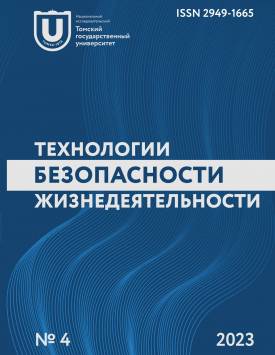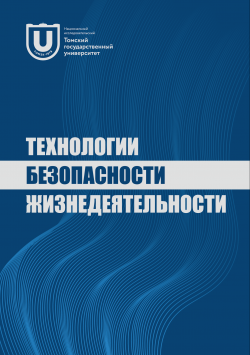Development of stereolithographic 3D printing technology with powder material based on ZrO2
The additive method of stereolithographic 3D printing is a promising method of forming powder materials, which significantly simplifies the technological process of obtaining products with a developed geometry based on them. In this direction, there are a number of scientific problems related to the study of the relationships between the physical and mechanical properties of the final sintered materials and the characteristics of the initial powder materials, the parameters of the additive formation processes and heat treatment. This paper presents the results of a study of additive formation processes by projection stereolithographic 3D printing (DLP) of materials based on ZrO2 ceramic powder. As a result of the study of the dispersion and microstructure of the initial powder material, it was revealed that the powder used is presented in the form of granules with an average size of about 50 microns. T o achieve an acceptable viscosity of the suspensions, a modification of the surface of the initial powder material was applied by adding 3 wt. % of the dispersant. Polymerization parameters, such as: curing depth (Cd), photosensitivity (Dp) and critical energy polymerization (Ec), suspensions for 3D printing, depending on the degree of filling with powder material, have been studied. The curing depth of the suspensions obtained in the work is up to 70 wt. % ZrO2, which provides the possibility of 3D printing with a layer thickness of up to 80 microns. For samples of ceramic materials obtained by the additive method, according to the results of thermogravimetric analysis, heat treatment modes were studied. According to the results of the microstructure study, it was revealed that the developed heat treatment modes provide complete uniform removal of the binder with a linear shrinkage of up to 30%. In the course of the work, ceramic samples were obtained with a density from 3.9 to 4.55 g/cm3, which is from 64% to 75% of the theoretical density (6.05 g/cm3) of ZrO2, respectively, and a microhardness from 8.29 to 12.4 GPa at sintering temperatures of 1400 and 1650°С, respectively. The obtained physical and mechanical characteristics correlate well with the properties of ZrO2-based ceramics obtained by a similar additive method cited by other authors, and confirm the prospects of using DLP 3D printing technology for the formation of ceramic products based on ZrO2. The authors declare no conflicts of interests.
Keywords
3D printing,
stereolithography,
ZrO2,
curing depth,
microstructure,
Vickers hardnessAuthors
| Tkachev Dmitry A. | Tomsk State University | d.tkachev11@gmail.com |
| Verkhoshanskiy Yanis Y. | Tomsk State University | verkhoshanskiy@yandex.ru |
| Zhukov Ilya A. | Tomsk State University | gofra930@gmail.com |
Всего: 3
References
Maines E.M. et al. Sustainable advances in SLA/DLP 3D printing materials and processes // Green Chemistry. 2021. Vol. 23 (18). P. 6863-6897. doi: 10.1039/D1GC01489G.
Kristiawan R.B. et al. A review on the fused deposition modeling (FDM) 3D printing: Filament processing, materials, and printing parameters // Open Engineering. 2021. Vol. 11 (1). P. 639-649. doi: 10.1515/eng-2021-0063.
Li Q. Balancing flexural strength and porosity in DLP-3D printing Al2O3 cores for hollow turbine blades // Journal of Materials Science & Technology. 2022. Vol. 104. P. 19-32. doi: 10.1016/j.jmst.2021.05.077.
Chen F. Preparation and biological evaluation of ZrO2 all-ceramic teeth by DLP technology // Ceramics International. 2020. Vol. 46. P. 11268-11274. doi: 10.1016/j.ceramint.2020.01.152.
Zheng J., Zhang H., Li X. Effect of ternary particles size distribution on rheology of slurry and microstructure of DLP printed ZTA ceramic // Materials Chemistry and Physics. 2021. Vol. 269. Art. no. 124656. doi: 10.1016/j.matchemphys.2021.124656.
Cai P. Effects of slurry mixing methods and solid loading on 3D printed silica glass parts based on DLP stereolithography // Ceramics International. 2020. Vol. 46 (10). P. 16833-16841. doi: 0.1016/j.ceramint.2020.03.260.
Li Y. Research on the effects of surface modification of ceramic powder on cure performance during digital light processing (DLP) // Ceramics International. 2022. Vol. 48 (3). P. 3652-3658. doi: 0.1016/j.ceramint.2021.10.146.
de Camargo I.L. et al. 3Y-TZP DLP additive manufacturing: Solvent-free slurry development and characterization // Materials Research. 2021. Vol. 24 (2). P. 1-8. doi: 10.1590/1980-5373-MR-2020-0457.
Ермакова Л.В. и др. Влияние диспергирующих добавок на свойства фотоотверждаемых суспензий на основе стабилизированного диоксида циркония // Новые огнеупоры. 2022. № 10. С. 45-50. doi: 10.17073/1683-4518-2022-10-45-50.
Zabti M.M., Abid M.E.M., Nwir M.A. Effects on dimensional accuracy of microstereolithographically machined parts after addition of light absorber // The International Journal of Engineering and Information Technology. 2015. Vol. 2 (1). P. 12-17.
Zhang X., Jiang X.N., Sun C. Micro-stereolithography of polymeric and ceramic microstructures // Sensors and Actuators A: Physical. 1999. Vol. 77 (2). P. 149-156. doi: 10.1016/S0924-4247(99)00189-2.
Bennett J. Measuring UV Curing Parameters of Commercial Photopolymers used in Additive Manufacturing // Additive manufacturing. 2017. Vol. 18. P. 203-212. doi: 10.1016/j.addma.2017.10.009.
Tkachev D. et al. Photocurable High-Energy Polymer-Based Materials for 3D Printing // Polymers. 2023. Vol. 15 (21). Art. no. 4252. doi: 10.3390/polym15214252.
Santoliquido O., Colombo P., Ortona A. Additive Manufacturing of ceramic components by Digital Light Processing: A comparison between the “bottom-up” and the “top-down” approaches // Journal of the European Ceramic Society. 2019. Vol. 39 (6). P. 21402148. doi: 10.1016/j.jeurceramsoc.2019.01.044.
An Z. et al. Effect of particle shape on the apparent viscosity of liquid-solid suspensions // Powder technology. 2018. Vol. 328. P. 199206. doi: 10.1016/j.powtec.2017.12.019.
Chhabra R.P., Srinivas B.K. Non-newtonian (purely viscous) fluid flow through packed beds: Effect of particle shape // Powder technology. 1991. Vol. 67 (1). P. 15-19. doi: 10.1016/0032-5910(91)80021-A.
Sun C., Zhang X. The influences of the material properties on ceramic micro-stereolithography // Sensors and Actuators A: Physical. 2002. Vol. 101. P. 364-370. doi: 10.1016/S0924-4247(02)00264-9.
Zheng J., Zhang H., Li X. Effect of ternary particles size distribution on rheology of slurry and microstructure of DLP printed ZTA ceramic // Materials Chemistry and Physics. 2021. Vol. 269. Art. no. 124656. doi: 10.1016/j.matchemphys.2021.124656.
Sarwar W. A., Kang J. H., Yoon H. I. Optimized zirconia 3D printing using digital light processing with continuous film supply and recyclable slurry system // Materials. 2021. Vol. 14. (13). Art. no. 3446. doi: 10.3390/ma14133446.
Zhao Y. Investigation on 3D printing ZrO2 implant abutment and its fatigue performance simulation // Ceramics International. 2021. Vol. 47. P. 1053-1062. doi: 10.1016/j.ceramint.2020.08.221.

